In today’s fast-moving digital era, where user expectations evolve by the second, web design is no longer just about aesthetics—it’s the cornerstone of seamless and captivating online experiences. As cutting-edge technologies like artificial intelligence and augmented reality reshape the digital landscape, designers face the challenge of merging innovation with user-centered principles to deliver speed, accessibility, and emotional resonance.
With studies revealing that 53% of mobile users abandon websites that take longer than three seconds to load, the stakes have never been higher. This article dives into the key strategies and principles that every web designer must master to not only meet modern demands but stay ahead in a fiercely competitive field. Whether you’re creating for desktop, mobile, or emerging platforms, discover how to build designs that leave a lasting impact.
The digital landscape and user expectations

The digital world is a dynamic environment where emerging technologies like artificial intelligence,augmented reality, and voice-activated interfaces influence web design. Users now expect more than basic functionality; they demand engaging interactions across all devices. Meeting these expectations is crucial, as 53% of mobile users abandon sites that take longer than three seconds to load. By integrating cutting-edge technologies, designers can ensure consistent engagement and satisfaction.
User-centered web design: the foundation of effective websites

Adopting a user-centered design (UCD) approach is essential in today’s digital landscape. UCD places the needs and preferences of users at the forefront of the design process, ensuring that websites are intuitive and enjoyable to use.
This approach involves thoroughly researching user behaviors and preferences to tailor the design accordingly. By focusing on user needs, designers can craft websites that provide seamless and satisfying experiences.
Implementing UCD enhances user satisfaction by creating a more personalized experience.
When users find a website easy to navigate and responsive to their needs, they are more likely to engage with the content and return in the future. Ultimately, UCD fosters loyalty, encouraging users to build a lasting relationship with the brand or service. This strategy is supported by reviews indicating that user-centered designs improve customer retention rates by up to 30%.
Purposeful layout and clear visual hierarchy
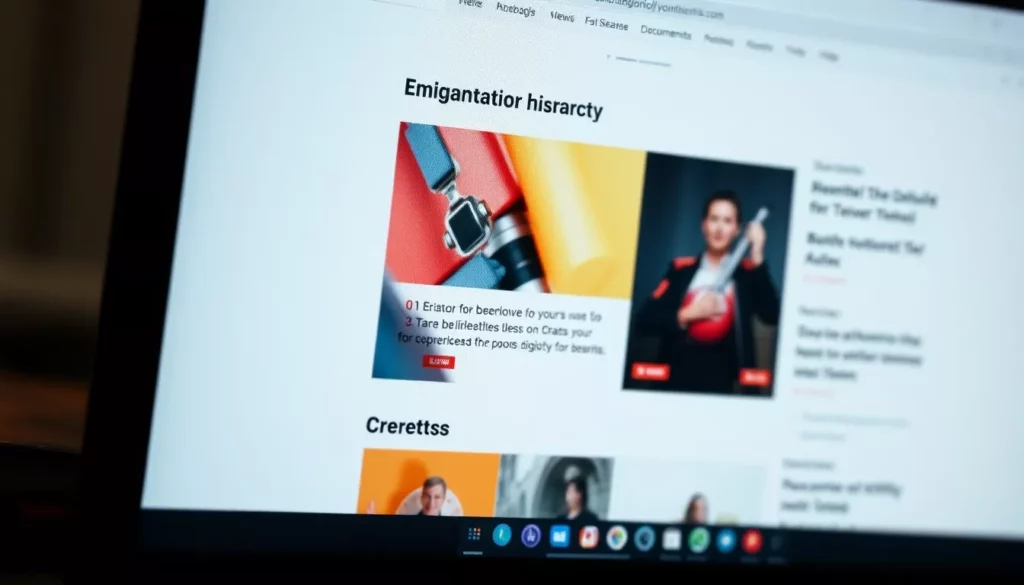
A well-structured layout is vital for guiding users through website content. By strategically placing elements like menus, logos, and call-to-action buttons, designers can create a logical flow that enhances user experience. This purposeful arrangement not only makes navigation intuitive but also reduces user frustration. For instance, a prominent e-commerce site improved its conversion rate by 20% after redesigning its layout to better highlight product categories and promotions.
Clear visual hierarchy is another key component of effective web design. By using contrast, size, and positioning, designers can emphasize important information, making it stand out to users.
This approach improves readability and ensures that users focus on essential elements first, enhancing overall comprehension and engagement. Incorporating HTML tables to organize information can further support this hierarchy, making complex data more digestible for users.
Responsive design for multi-device compatibility
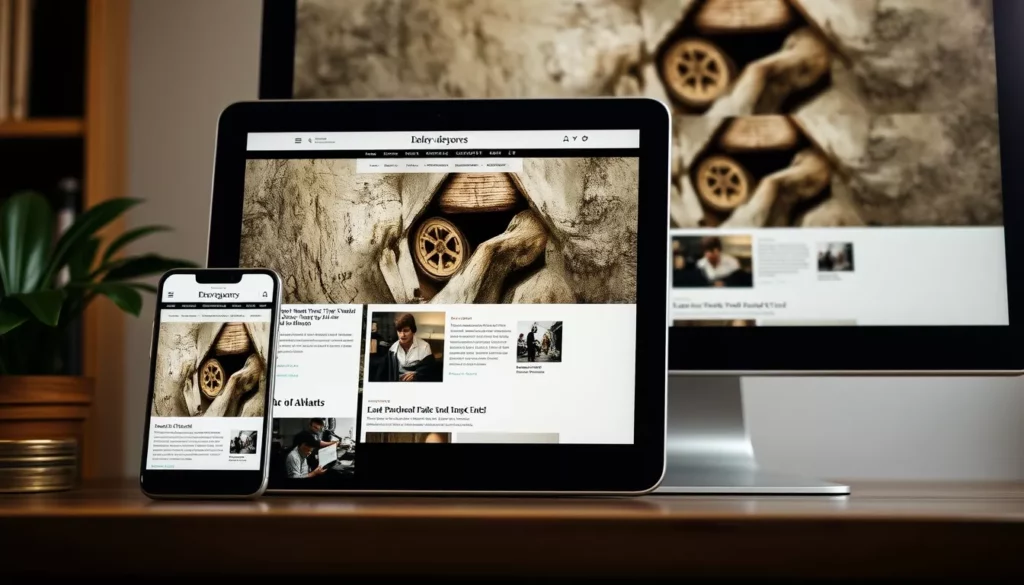
Users access websites from a variety of devices, including smartphones, tablets, and desktops.
Responsive design is essential for ensuring websites function seamlessly across different screen sizes and resolutions. This adaptability is crucial for maintaining a consistent user experience, regardless of the device used.
With more users accessing the internet on the go, websites must be adaptable to various devices to capture and retain audience attention.
The increasing use of mobile devices makes responsive design a must have feature, allowing websites to adjust dynamically for a smooth user experience. This not only meets user needs but also improves visibility, as search engines prioritize mobile-friendly websites. 85% of adults believe a company’s mobile site should be as good or better than the desktop version, highlighting the importance of responsive design.
Simplicity and clarity in design elements
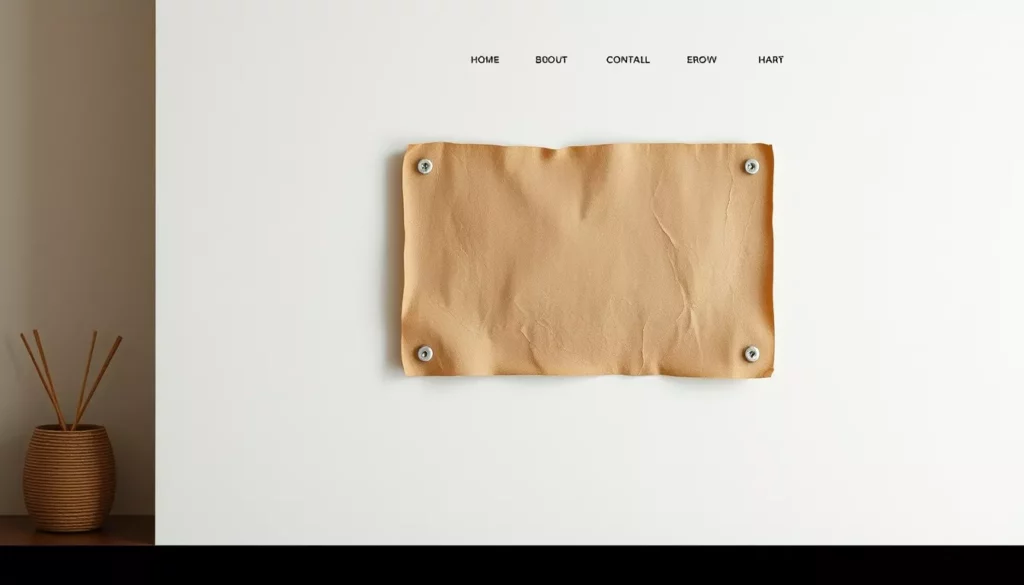
Simplicity is a fundamental principle of effective web design.
A cluttered interface can overwhelm users, making it difficult for them to navigate and find the information they need. By embracing simplicity, designers can create clean, intuitive interfaces that enhance user experience.
A well-known study revealed that 94% of first impressions are design-related, highlighting the importance of simplicity in capturing user attention.
Clarity goes hand in hand with simplicity. Clear design elements improve usability by ensuring users understand how to interact with the website. This clarity encourages users to explore the site further, increasing satisfaction and engagement.
By focusing on straightforward navigation and unambiguous content, designers can significantly enhance the user journey.
Consistency across design elements
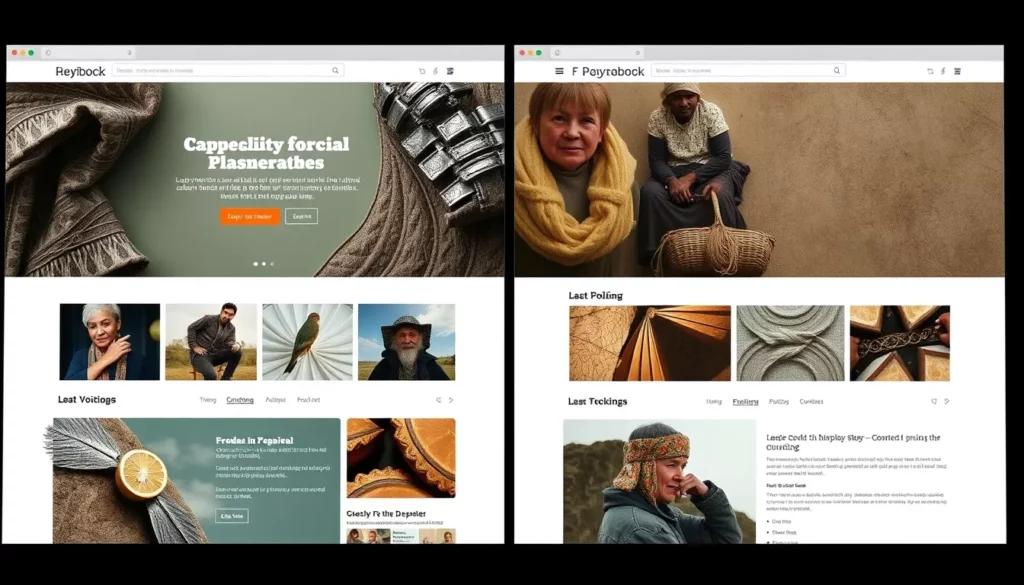
Consistency is vital for a cohesive website experience, enhancing brand recognition through uniform colors, typography, and layout.
Familiar design patterns improve usability, allowing intuitive navigation and reducing cognitive load. This approach can increase brand recognition by up to 80%, as users are more likely to trust a site that maintains uniformity, projecting professionalism and reliability.
Accessibility for all users

Designing websites to be accessible to all users, including those with disabilities, is essential for creating an inclusive online environment.
Accessibility involves using readable fonts, ensuring sufficient color contrast, and incorporating assistive technologies like screen readers. This inclusivity not only improves user experience but also aligns with legal and ethical standards, ensuring compliance with accessibility regulations.
According to statistics,71% of users with disabilities will leave a website if it is inaccessible, underscoring the necessity of inclusive design.
Interactive feedback and user engagement
Feedback is a powerful tool for enhancing interactivity and responsiveness in web design.
By providing users with visual, auditory, or tactile cues, designers can guide them through their interactions with the website. Feedback helps users understand the outcomes of their actions, creating a more engaging and intuitive experience.
Methods for providing feedback include animations, sound effects, and messages, which can indicate successful form submissions or confirm button clicks, improving user confidence and satisfaction.
Engaging micro-interactions
Designing for clarity and purpose
Micro-interactions are small, functional elements within a website that provide feedback or guide users through specific tasks. These subtle interactions play a crucial role in enhancing user experience. By focusing on clarity and purpose, designers can create micro-interactions that inform and engage users without overwhelming them.
How do micro-interactions foster user engagement?
Micro-interactions foster engagement by incorporating elements of surprise and delight into the design. They provide immediate feedback, such as a button animation when clicked, ensuring users are aware of their actions. This subtlety creates an interactive environment that feels responsive and intuitive. Consistent micro-interactions build a cohesive user experience that enhances overall satisfaction and keeps users engaged.
AI-driven personalization and automation
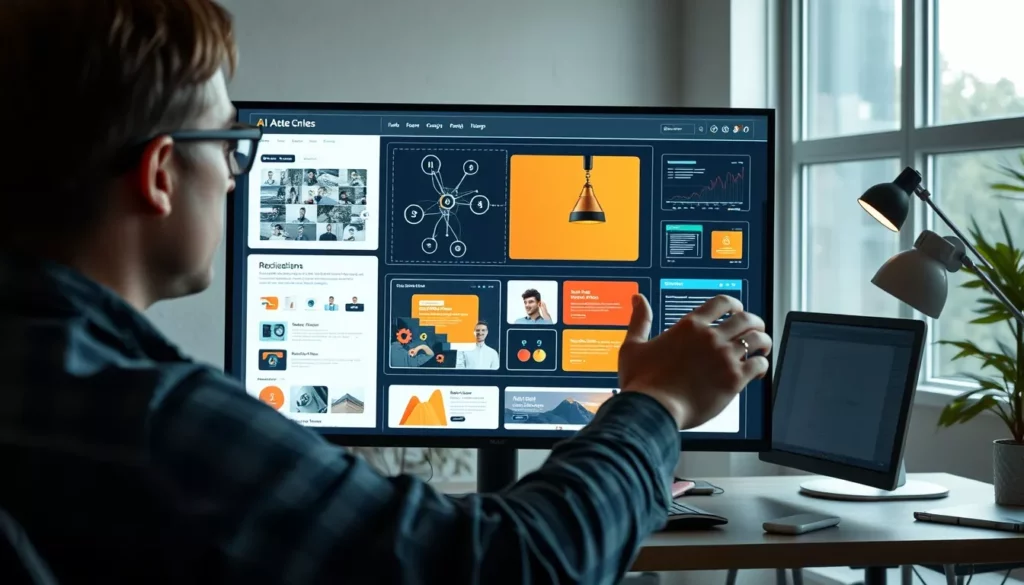
Automating web design with AI tools
AI-driven tools are revolutionizing website design by automating various aspects of the process.
These tools generate design options based on established best practices and current trends, significantly reducing designers’ time and effort. By analyzing vast amounts of data, AI can suggest layouts, color schemes, and content arrangements likely to resonate with users.
This automation speeds up the design process and ensures websites are built with a user-focused approach.
The result is more effective and engaging web pages that can adapt to changing user preferences and technological advancements. Beyond automation, AI plays a crucial role in enhancing user experience through personalization.
Learn more about what user experience is and its importance in digital strategies.
Enhancing user experience through AI
AI creates tailored experiences by analyzing user data, including personalized content recommendations and predictive interfaces. This level of personalization enhances user satisfaction and encourages longer engagement times.
AI’s capabilities extend to optimizing websites for emerging technologies like voice search. As digital assistants like Siri and Alexa become more prevalent, ensuring site accessibility via voice search enhances overall user experience. This involves using
The aesthetic-usability effect
The aesthetic-usability effect suggests that users perceive visually appealing designs as more usable.
This principle highlights the importance of balancing aesthetics with functionality in web design. A well-designed website not only attracts users but also enhances their perception of usability.
Can aesthetics improve perceived usability?
Visual appeal has a significant impact on user perception.
When a website is aesthetically pleasing, users are more likely to believe it is user-friendly and reliable.
This perception can lead to increased satisfaction and engagement, making aesthetics a crucial component of effective web design. However, it’s essential to strike a balance between aesthetics and functionality, ensuring that a website is both attractive and effective in meeting user needs.
Emotional design for user connection
| Web Design Principle | Impact | Statistics/Examples |
|---|---|---|
| Fast Loading Speed | Reduces abandonment | 53% of mobile users leave if load time > 3 seconds |
| User-Centered Design | Increases satisfaction and retention | Improves retention by up to 30% |
| Purposeful Layout | Enhances user experience | 20% conversion rate increase for e-commerce site |
| Responsive Design | Ensures multi-device compatibility | 85% think mobile site should be as good or better than desktop |
| Simplicity and Clarity | Improves first impressions | 94% of first impressions are design-related |
| Consistency | Enhances brand recognition | Increases recognition by up to 80% |
| Accessibility | Ensures inclusivity | 71% of users with disabilities leave if inaccessible |
Emotional design focuses on creating experiences that resonate with users on an emotional level.
By incorporating elements like movement and balance, designers can evoke positive emotions and foster a connection between users and the website. This approach enhances user engagement by creating memorable interactions.
When users feel an emotional connection to a website, they are more likely to return and recommend it to others, increasing its reach and impact.
Adapting to modern design trends
Staying informed about evolving design trends is crucial for creating relevant and innovative websites.
Current trends like dark mode, the interplay between maximalism and minimalism, and the integration of AI and machine learning are shaping the future of web design. By balancing timeless principles with modern trends, designers can create websites that meet the needs of today’s users.
Embracing new technologies and design philosophies ensures that websites remain competitive in the ever-changing digital landscape.
By mastering these essential web design principles, designers can create websites that are visually appealing, functional, accessible, and user-friendly. As the digital landscape continues to evolve, embracing these principles will be key to success in web design, ensuring that websites meet the needs and expectations of diverse user groups across various platforms and devices.
Head CRO and co-CEO of iSocialWeb. CMO of Growwer. Specialist in conversion optimization and Experiential Marketing.
- Este autor no ha escrito más artículos.

